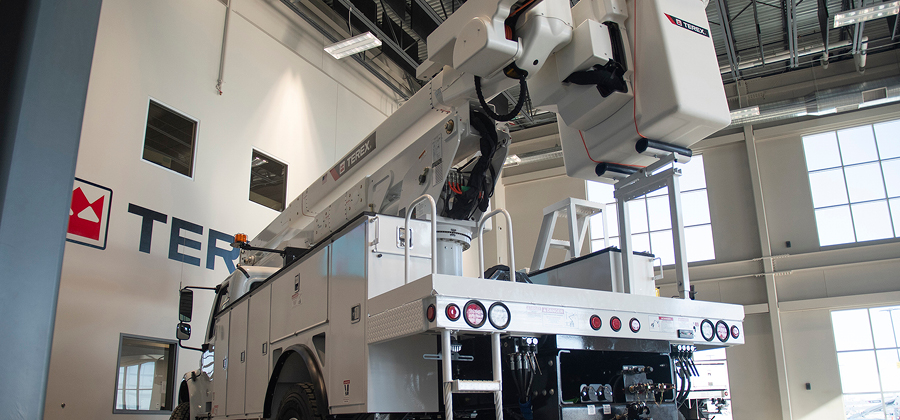Why Application Should Drive the Spec when Ordering a Bucket Truck or Digger Derrick

For utility companies, nearly every bucket truck or digger derrick purchased is a custom machine. Utilities can take several steps that will help to streamline spec’ing and quoting, while still achieving a purpose-built truck that meets the needs of the organization. There are a number of potential benefits. Customers can take advantage of more affordable equipment, faster turnaround on service and better support responsiveness, as well as decreased manufacturing lead times. The first step in the specification process should be a clear understanding of the application.
Field Input
Get input from field operations personnel about how the truck will be used day-to-day. How high or far do you need to reach? Do you usually need to set up from the road? What’s the typical weight that needs to be lifted? How far from the truck or trailer do you usually need to place the load? What are the typical ground conditions?
For example, most bucket trucks sold to the utility industry are equipped with jibs. However, not all jibs are the same and the user should evaluate the type of work when specing the equipment for the job. Consider whether most tasks are construction or maintenance work on distribution or transmission lines, as well as typical load weights.
Bucket capacity selection is also impacted by the application. Two fully equipped lineworkers with PPE plus tools and materials for typical line maintenance can quickly add up to 700 pounds or more for distribution work, and upward of 1,000 pounds for transmission work. The type of work should determine the choice of bucket capacity or possibly the selection of a dual-rated bucket.
Safety Perspective
Often safety departments and standards committees have a need to reduce a specific type of risk. It might be related to lighting or ingress/egress features. You’ll want to communicate the objective as it relates to operator aids, ergonomics, or operational efficiency, as well as provide a list of value-added equipment that is commonly used.
For example, typical access to the cargo deck is from the side, between storage compartments, but as the deck becomes cluttered with materials, it can create a tripping hazard. To work around that, Terex Utilities designed a rear access point—stairs with a railing. This puts the operator closer to the bucket without having to walk across the cargo deck. Terex Utilities can also lower the boom stow position on some units to reduce the step height from the deck into the platform.
Improving ergonomics may also be important to consider. Historically, three such features that put the worker closer to the work are platform rotation, platform lifter, and jibs.
As new technologies come available, having a close working relationship with your OEM opens doors to testing new product concepts. Two examples of these operator aids are the Positive Attachment Lanyard (PAL) warning device and Load Alert. PAL is an integrated system that signals the operator with visual and audible warnings if his or her lanyard is not attached to the anchor point when the aerial device is operated. Terex Utilities first introduced PAL in 2017 after running a pilot program with a leading electric utility cooperative and is currently available for new units and retrofit on many models. Meanwhile, Load Alert monitors and analyzes the truck’s jib and platform capacity and boom positions on Terex aerial devices. It provides visible and audible alerts when an overload is detected.
Selecting Upfits
Next select the extras—strobe lights, pintle hitches, winches, material storage securement brackets, wire reels, pole racks, transformer holders, etc.—according to the vehicle’s core function. You’ll also want to consider operator comfort features, such as air ride seats and radio when ordering the chassis. One trend is an increased focus on driver aids—back-up cameras, crash detection systems with autonomous braking, and blue tooth for hands-free phone use. These are the kinds of features that safety managers might recommend, emphasizing the importance of including a variety of people in your standard specification process.
Consult with the manufacturer on the standard options that are available. Using standard components and accessories as building blocks translates to more competitive sales prices and shorter equipment lead times for our customers.
When you focus on the application, it is easy to achieve a purpose-built truck that meets the needs of the organization. Rather than providing your own specs, simply communicate how the equipment will typically be used. This gives the manufacturer the flexibility to aid you to figure out how to get you where you need to be.

.png?sfvrsn=cfc0900d_0)